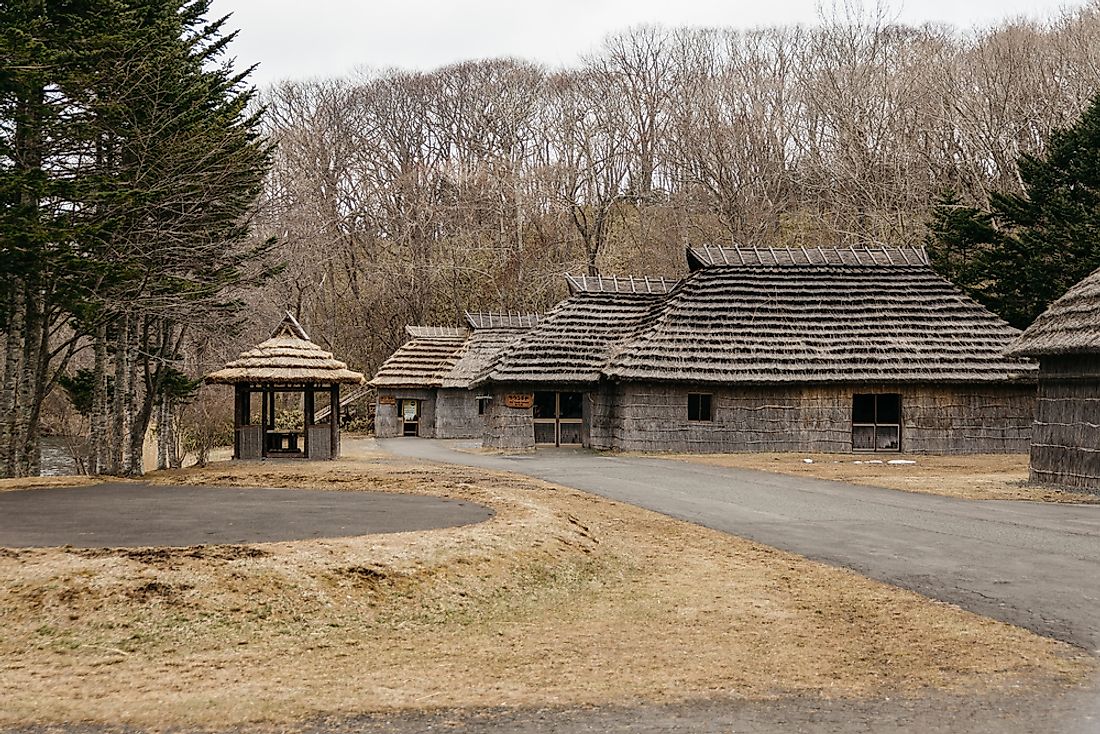The Ainu People: Cultures of the World

5. Description
When we think of indigenous peoples, we usually are referring to Australian or Native American tribes and traditions. However, the Americas and Down Under aren't the only location to have a native population with unique traditions. The Ainu (Japanese), or Aynu (Russian), are indigenous peoples from the eastern Asian region. In their own language, the word Ainu means exactly what it represents: Human. The Ainu people reached populations as high as 26,700 in 1807, which markedly dropped to only 15,699 as of 1931. They speak their own native tongue, which was spoken throughout their range, including the southern half of the island of Sakhalin as well as a small number of people in the Kuril Islands. Today, there are an estimated 25,000 Ainu known to be living in the Japanese Islands.
4. Architecture
As the first people in Japan, the Ainu had little influence in the construction of their housing of that time. The word “chise” is the Ainu word for house, which can be seen bundled together within villages, which are known as “Kotans”. Materials for their housing varied by each village's geographic location. Depending on the area, homes would be made out of bamboo materials, wild grasses, thatch, reed grasses, and some tree bark. Large trees, such as chestnut and Amur, were often used as supporting pillars. These wooden supports would stand on their own, even without foundation stones. Their style of housing also included windows, and usually three of these were put in each chise. The most important window was the “rorunpuyar”, which means "gods' window", which was the only window that would allow the gods to travel through and located on the east sides of their houses, with an altar often facing it.
3. Cuisine
When thinking of Japanese cuisine, our minds usually revert to the stereotypical sushi and rice. However, the Ainu people were responsible for many of their own unique contributions to traditional Japanese dishes. These dishes included delicacies such as bear and wolf flesh, badger, ox, and horse. At times, fox, fowl, and fish were used as well. These animals were either steamed, boiled, or roasted, and were paired with various wild vegetables and herbs. Although women ate from their dishes with spoons, the men would more often use chopsticks.
2. Cultural Significance
Religiously, the Ainu people are 'pantheistic', meaning they believe in a collection of gods rather then just one. Each of these gods represented certain elements or virtues, such as the God of Water and the God of Mountains. These people also believed that certain animals could become incarnate. These special animals included the bear, striped owl, and killer whale. Like most other cultures, gender roles were strictly structured patriarchally. The boys would be instructed on how to hunt and provide for the tribe, whereas the females, from a young age, would learn how to cook, sew, and take care of children.
1. Threats
The biggest threat the Ainu people has faced has been the same one that many indigenous peoples have faced: modern technological advancements and change through cultural assimilation. This drove the Ainu people away from their native lands, and types of assimilation were promoted by the majority Japanese. It wasn’t until the 20th Century that people with Ainu heritage started fighting for their indigenous rights. Due to these efforts, the Ainu Culture Promotion Act was enacted in 1997. Through this act, more and more people began to learn about their lost culture, and as a result Ainu cultural education, pride, and awareness once again began to flourish.











